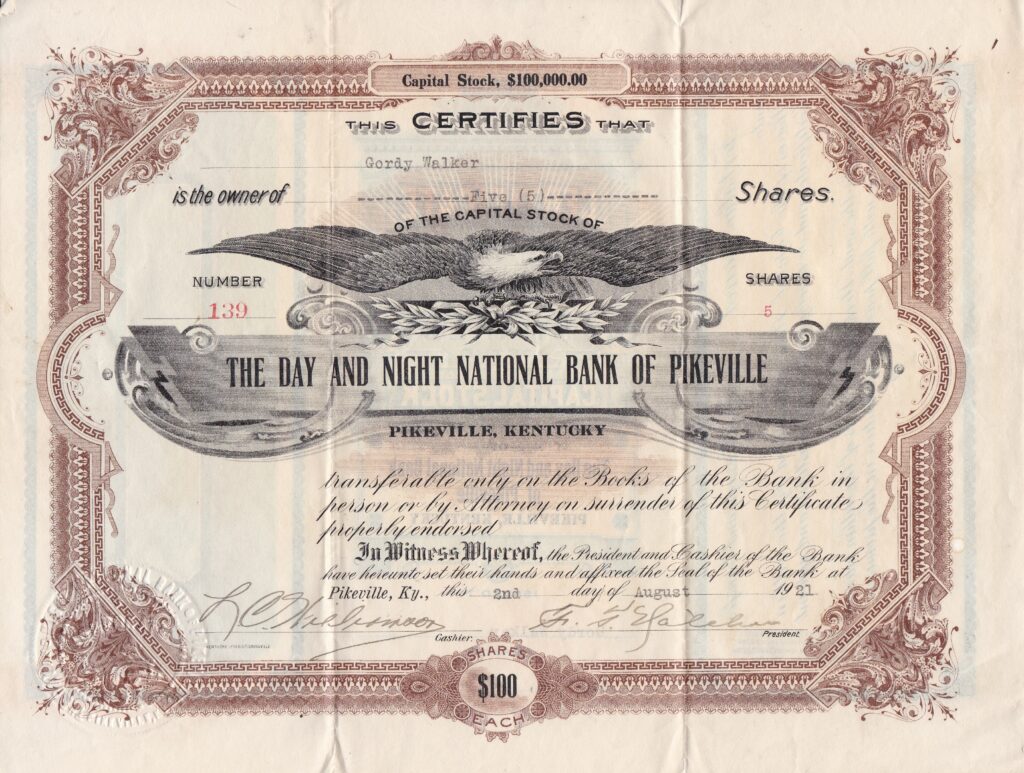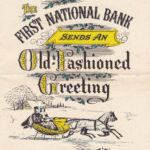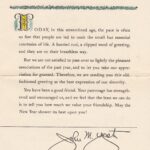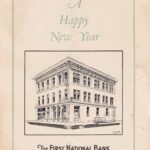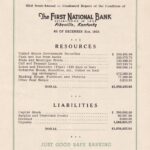Scroll to see pictures in order or click a picture below to go to it.
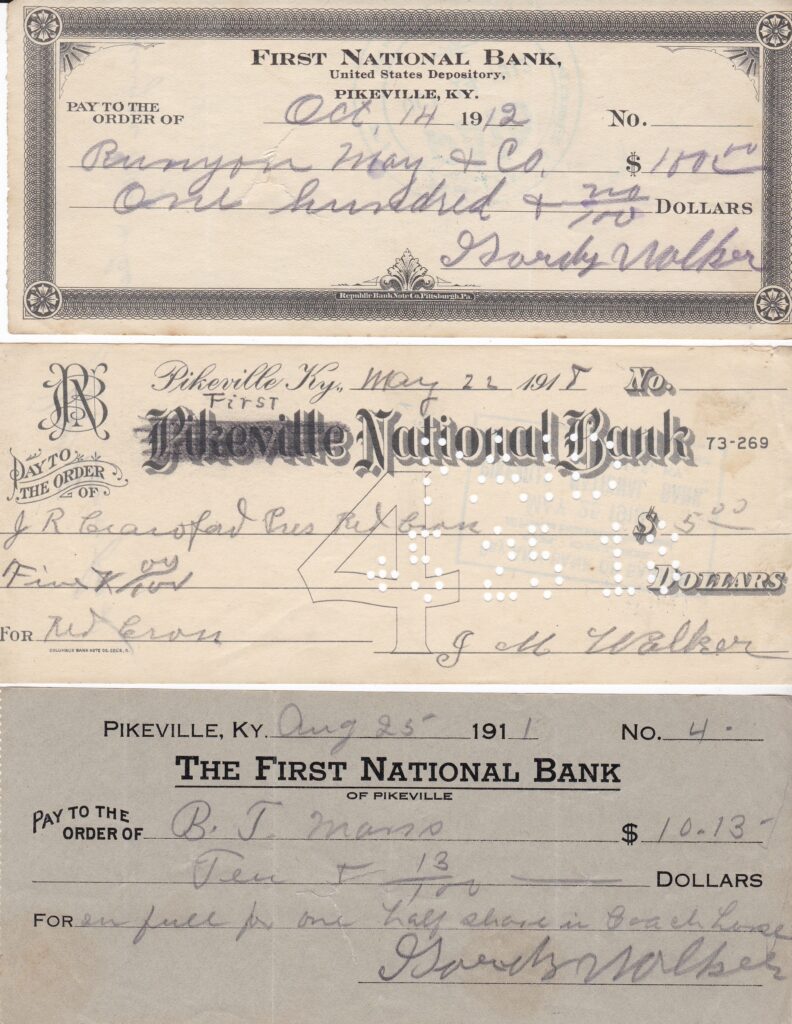
Photos 1-12 paint a picture of one family’s dealings with local Pikeville banks both before and during the Great Depression. Notice the bank names on the checks and documents and you will have a nutshell history of the first few decades of the banks in Pikeville.
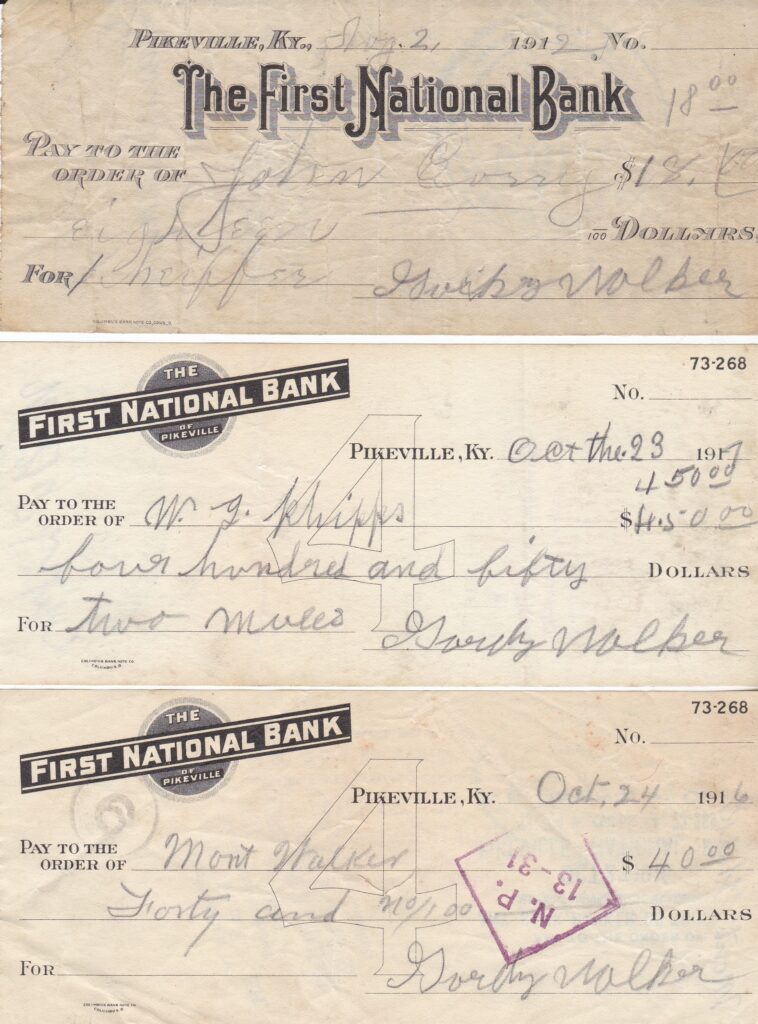
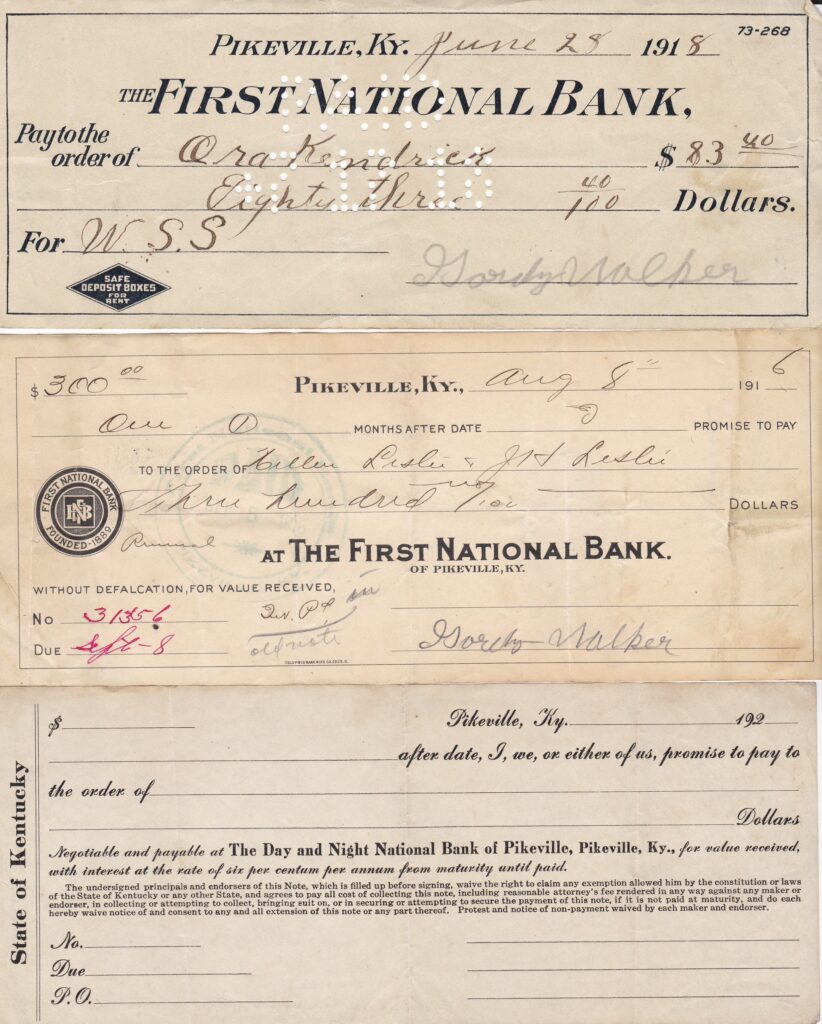
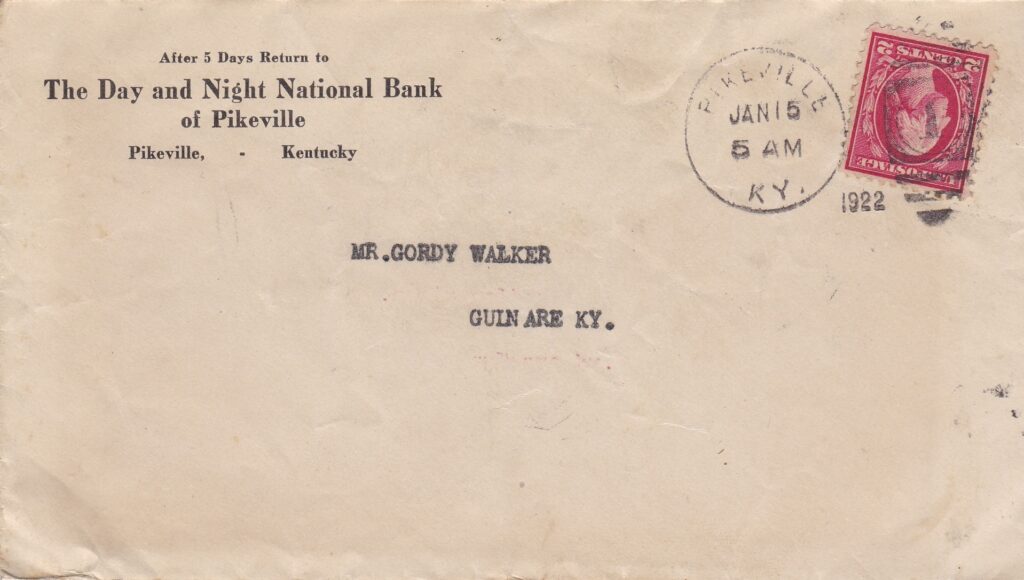
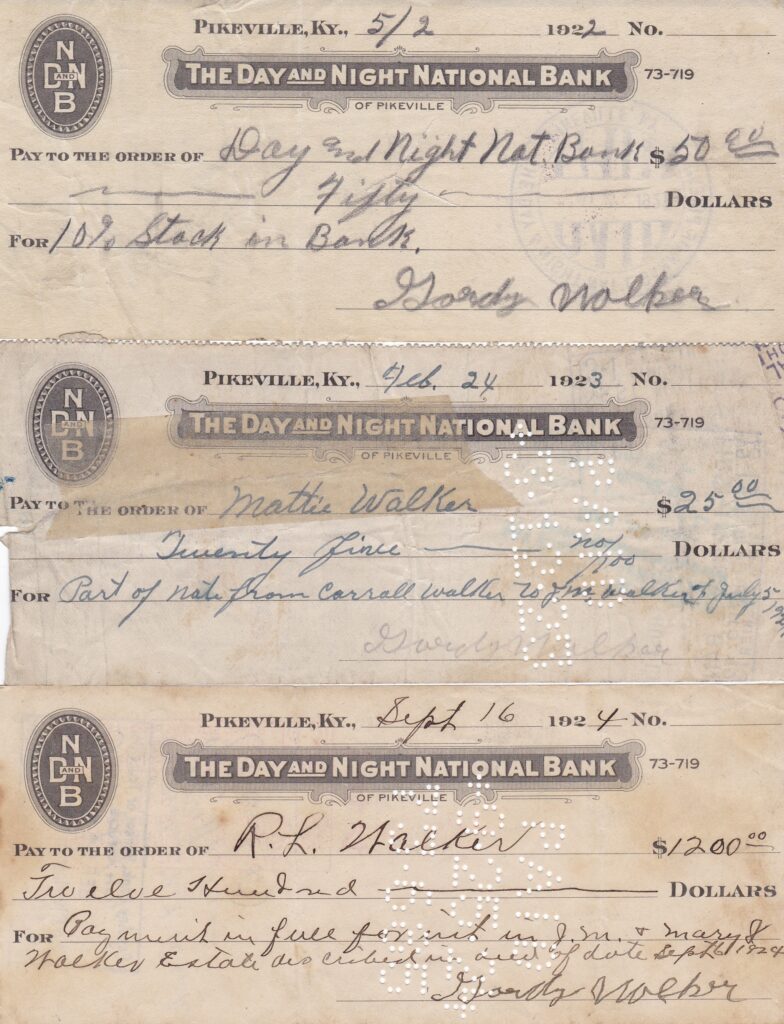


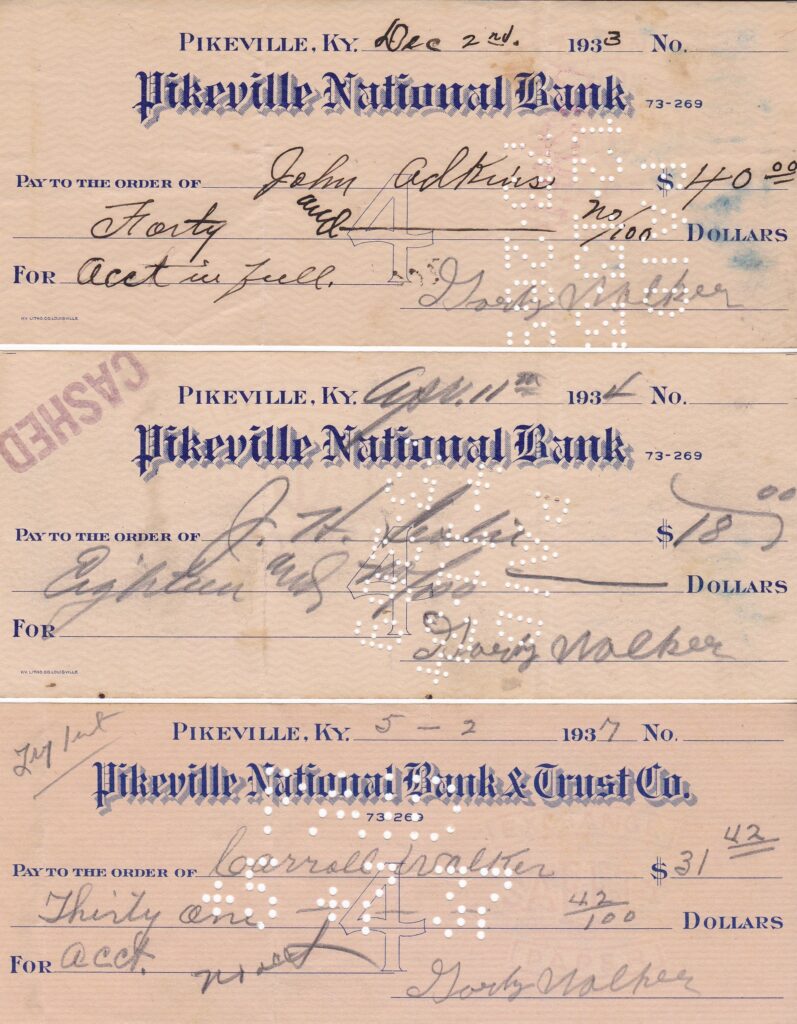

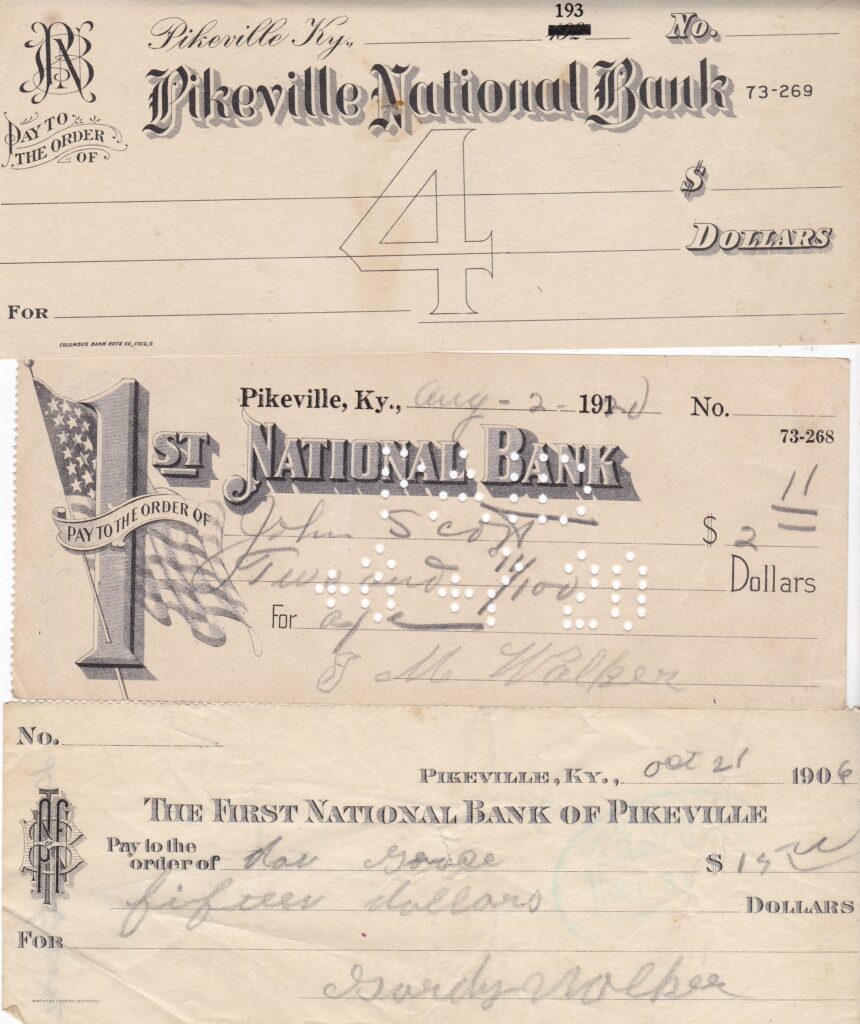

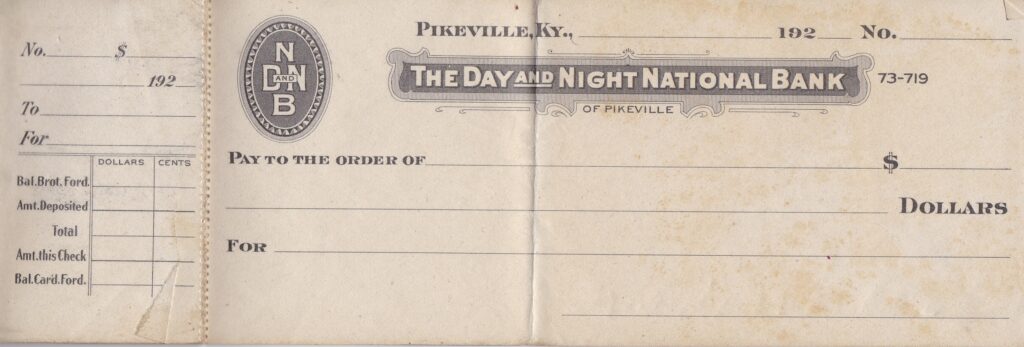
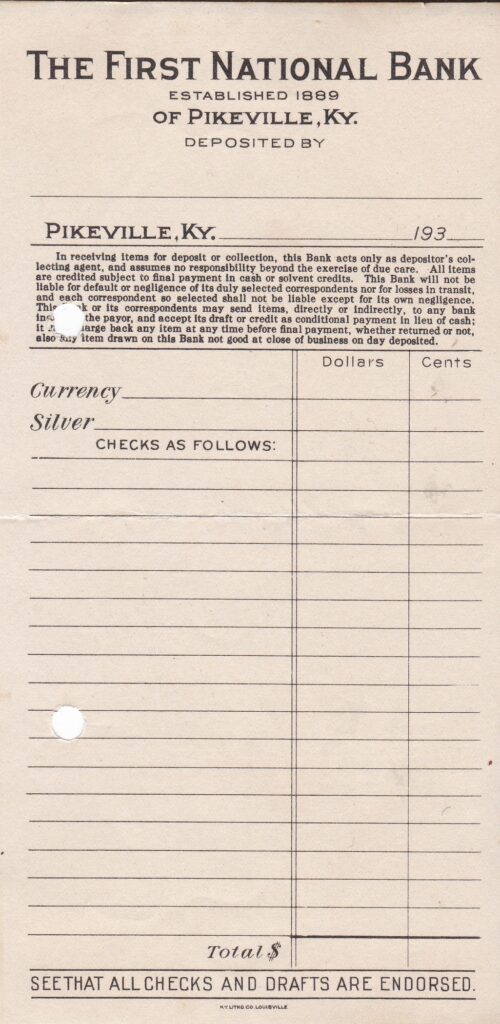

Small packages sometimes offer a wealth of information. This bit of paper is a receipt for one man’s land taxes for the years 1862-65. Why were all four years paid at one time? Because during those years there had been no legal authority- no county courts, no state or circuit courts, no law enforcement, no justices of the peace to try neighborhood cases. During late October 1861, Pikeville was occupied by the Fifth Kentucky Infantry, C.S.A., under Col. John S. Williams. It was next controlled by Gen. William “Bull” Nelson’s Union troops for two weeks following the Confederate withdrawal beginning November 9. A little over two months later, Col. James A. Garfield’s force under Col. Daniel W. Lindsey established Camp Brownlow there. During a scouting expedition prior to that occupation, County Judge William Cecil was murdered and, for all practical purposes, every man became his own law for the next four years. Once civil rule was re-established in the spring of 1865, four years’ worth of property taxes came due at one time.

The years immediately after the Civil War saw constant change in Pike County law enforcement. Looking at the sheriffs’ names in photos 13, 14, 15, and 16, notice the different names. William Payne Johnson was from the Dorton area and was probably appointed to the office rather than elected. He had two sons serve the Union, William and John. John was killed in action in 1862 and William relocated to Johnson County after the war. Joseph E. Ratliff was a former Confederate soldier and son of William General Ratliff. The Cline name speaks for itself, especially to Hatfield McCoy Feud scholars, but it is seldom written that his brother, Jacob, was a Confederate soldier who served with Devil Anse Hatfield. Thomas May was the son of the elder Thomas May of Robinson Creek, whose family had three sons fight for the Confederacy and one for the Union. Marrs was from another strong Confederate family. Election of these former Rebels to the office of sheriff bespoke Pike County’s rejection of the state and federal Reconstruction era edicts.

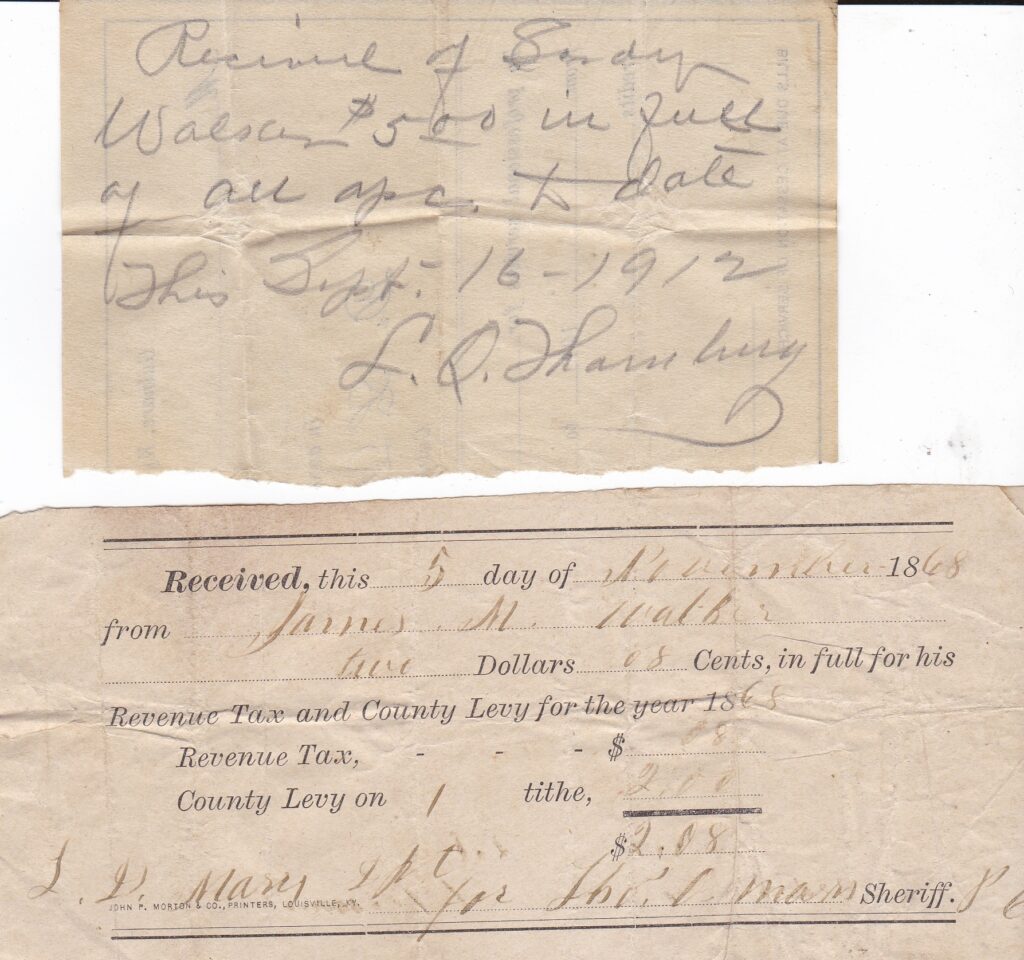
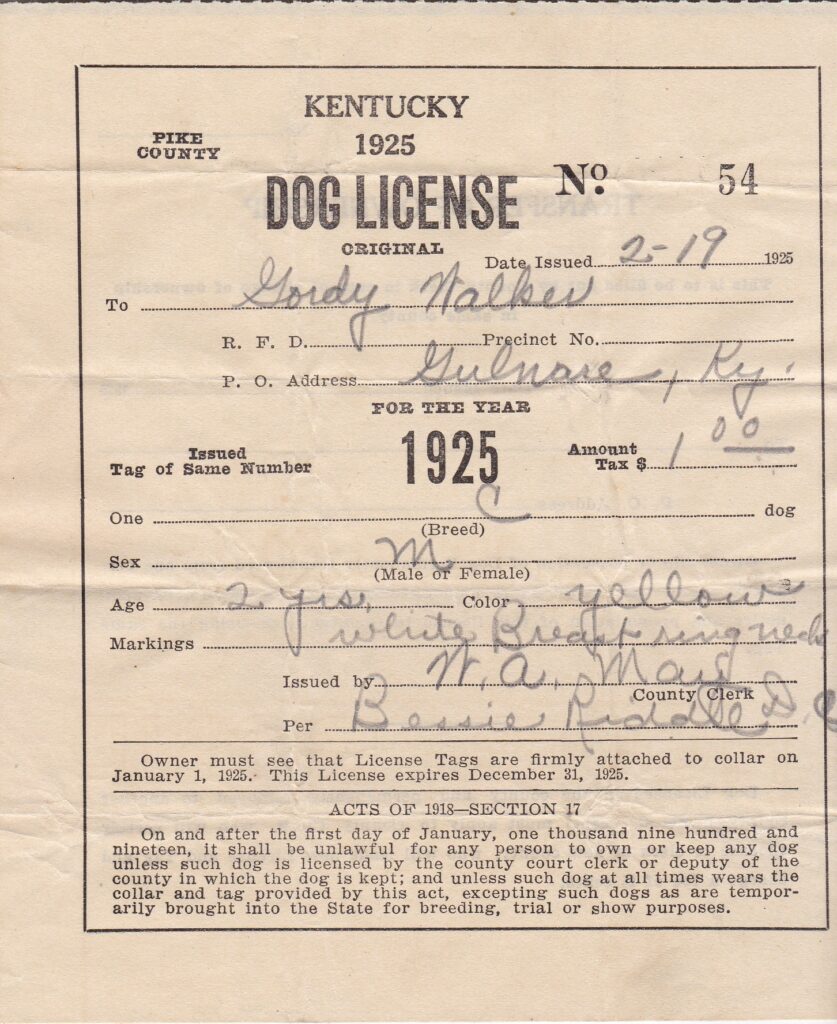
Owning a dog during the early 1920s was a serious matter. These two photos show the front and reverse of a dog tax form. Payment of the tax was required of anyone in Pike County owning a dog. Proof of transfer was the same as transferring a car today; just fill out the back of the receipt. Wonder what proof was necessary in case the dog died?
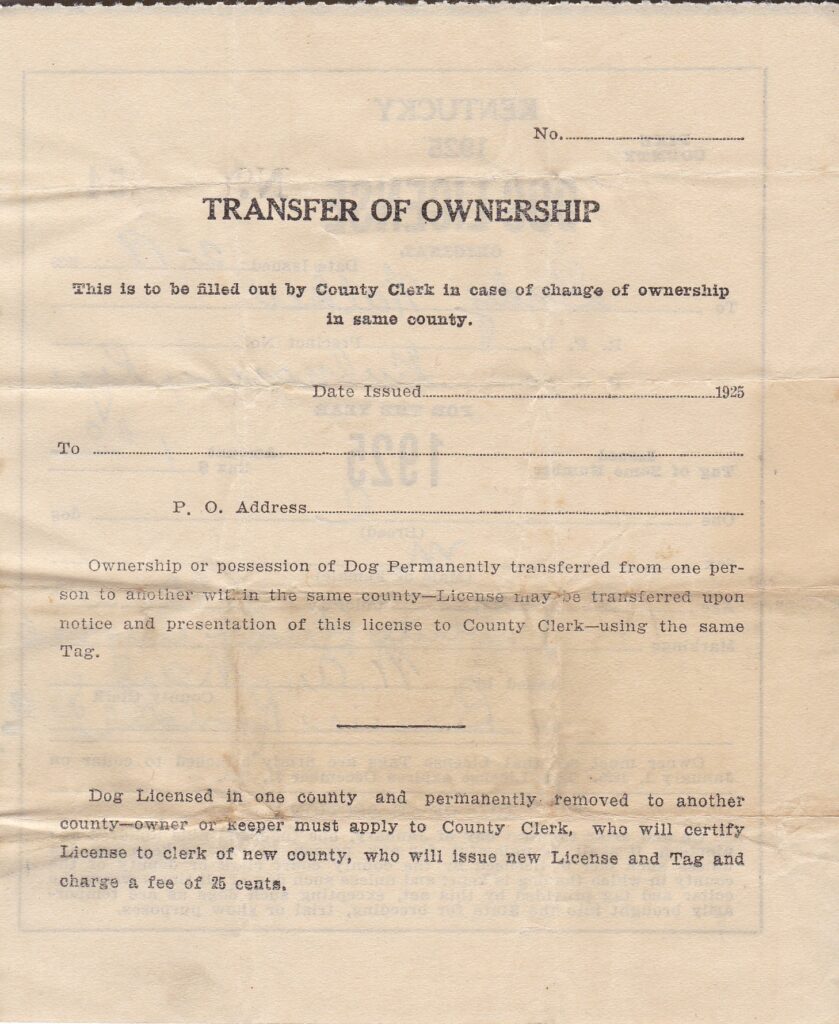
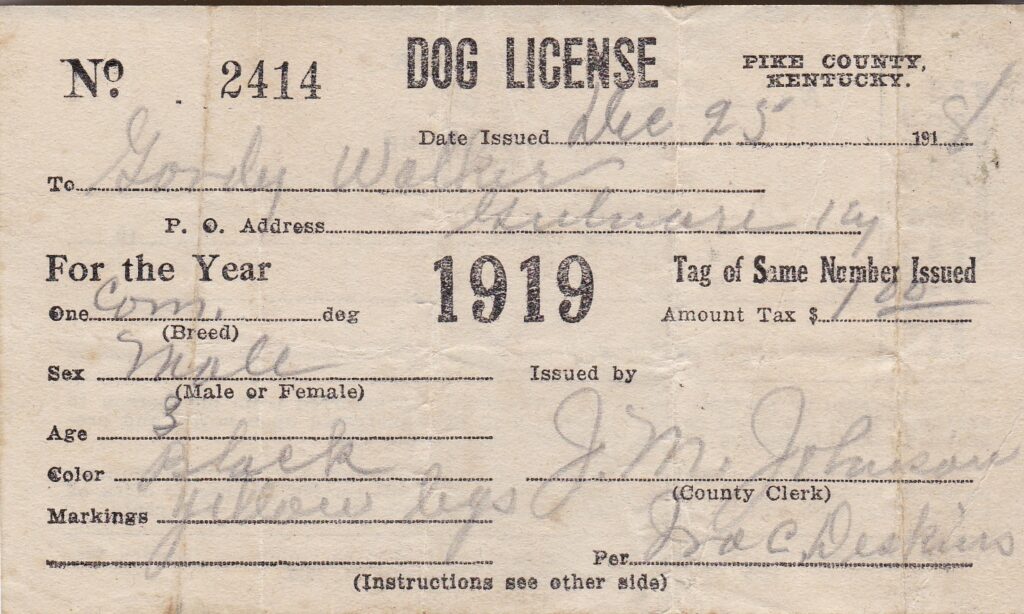



Notice a famous local name on this store account note? Well, maybe not famous, but J.W. Mayo was John Wesley Mayo, uncle of John C.C. Mayo. John Wesley and his brother Thomas Jefferson were orphaned by their father’s death when they were youngsters. The brothers ended up at Gulnare when their mother remarried. She brought the boys with her into the home of their new stepfather, Martin Leslie. John C.C. Mayo was born on the farm of his stepgrandfather in September 1864, then moved with his family to Paintsville a few years later. John Wesley stayed on Lower Johns Creek and made his living as a storekeeper.
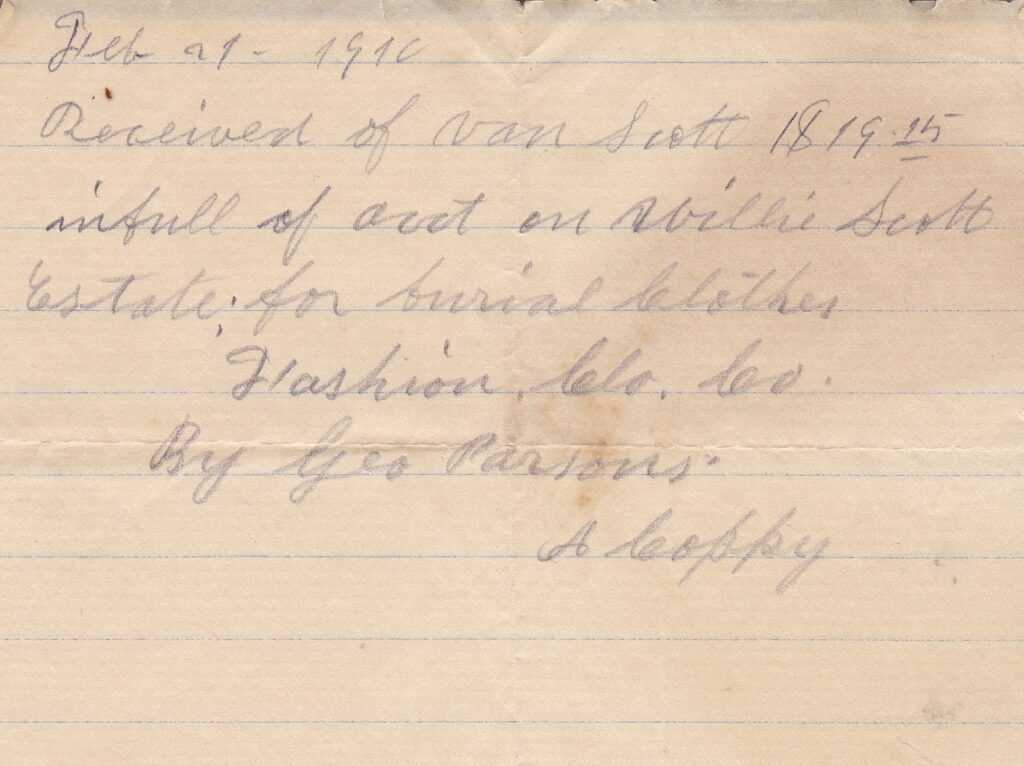

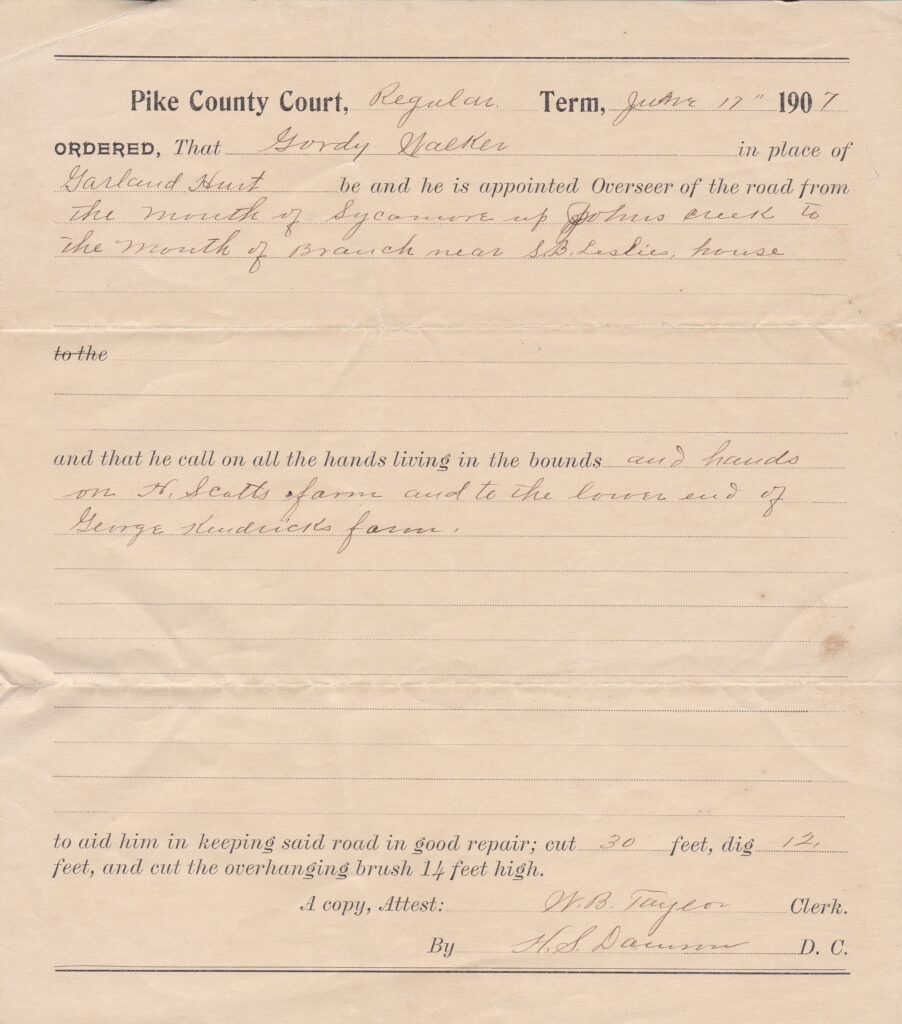
Since the early days of Kentucky statehood, helping maintain county roads had been a legislated obligation of every male citizen upon reaching the age of majority. Pike County Court records are replete with lists of men responsible for cutting, digging, and trimming in order to maintain roads in passable condition. This order made Gordy Walker and his men responsible for the stretch of road from the mouth of Sycamore upstream to the mouth of the branch near S.B. Leslie’s house.

Breeding stock was traditionally a valuable commodity to Pike County farmers. Imagine an imported stallion worth $92,940 in today’s money being brought into the Gulnare community. Gordy Walker bought two shares in this horse, named Bar, and paid $200 ($6,196 in today’s currency) for his 6.666% ownership.
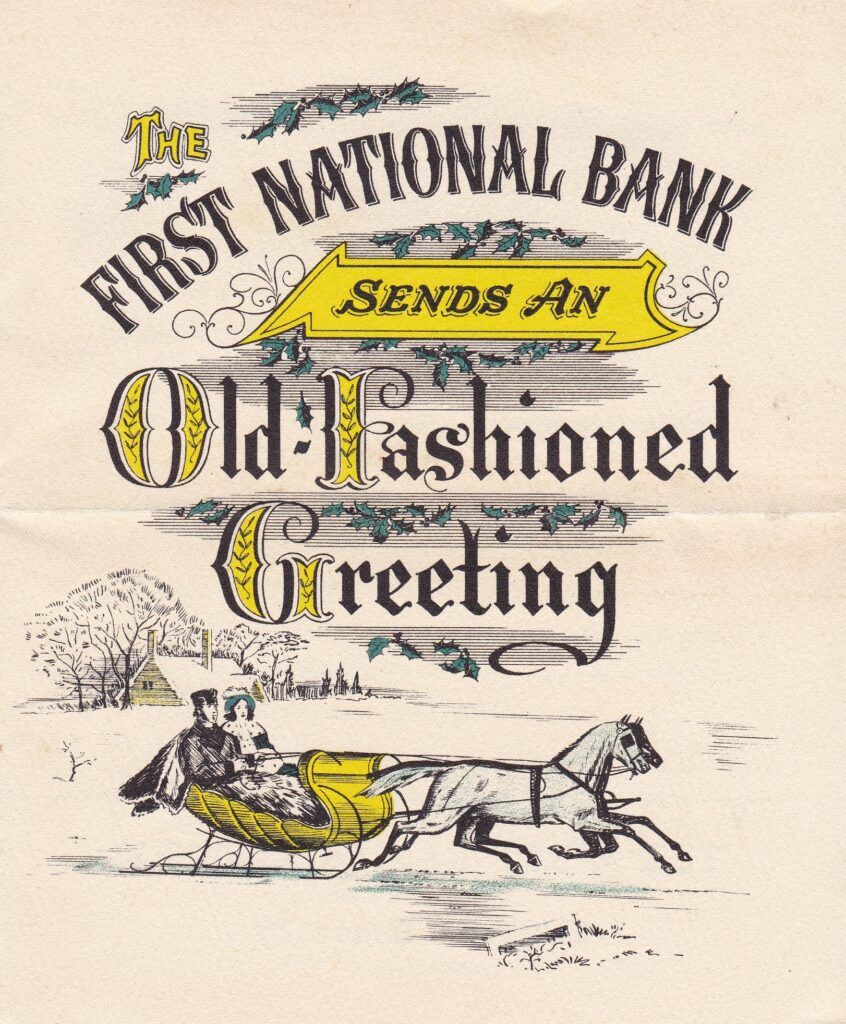
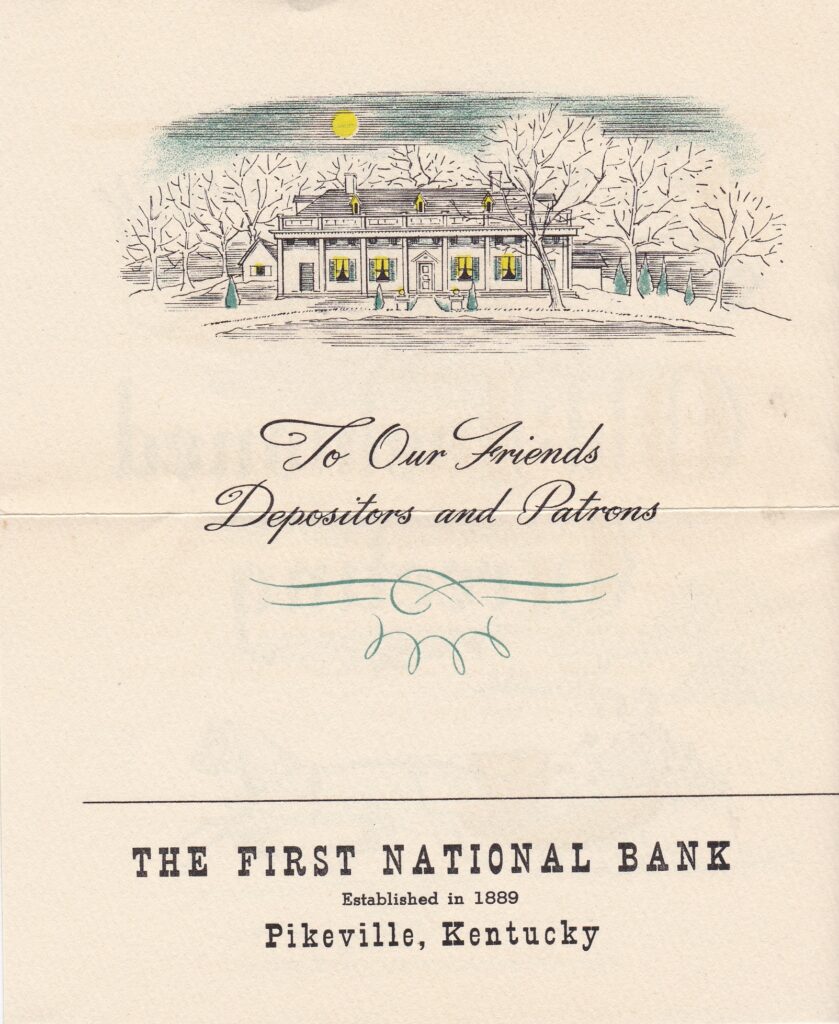

These 3 PHOTOS are the printed sections of a 4-part Christmas card sent out by the First National Bank of Pikeville.
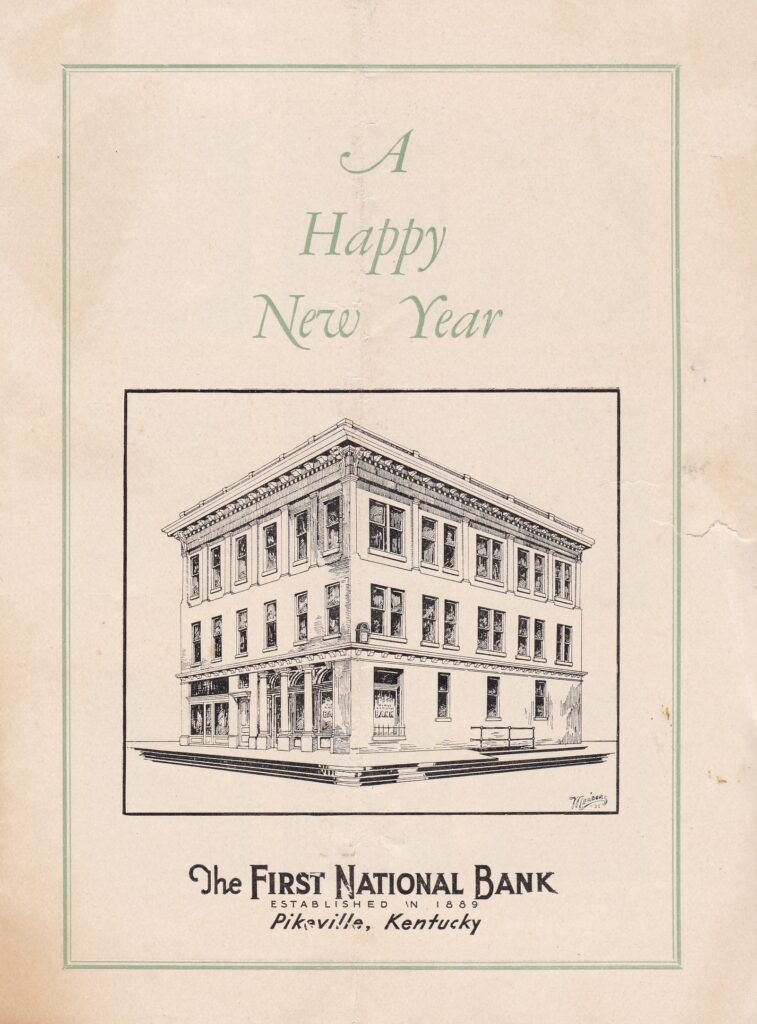
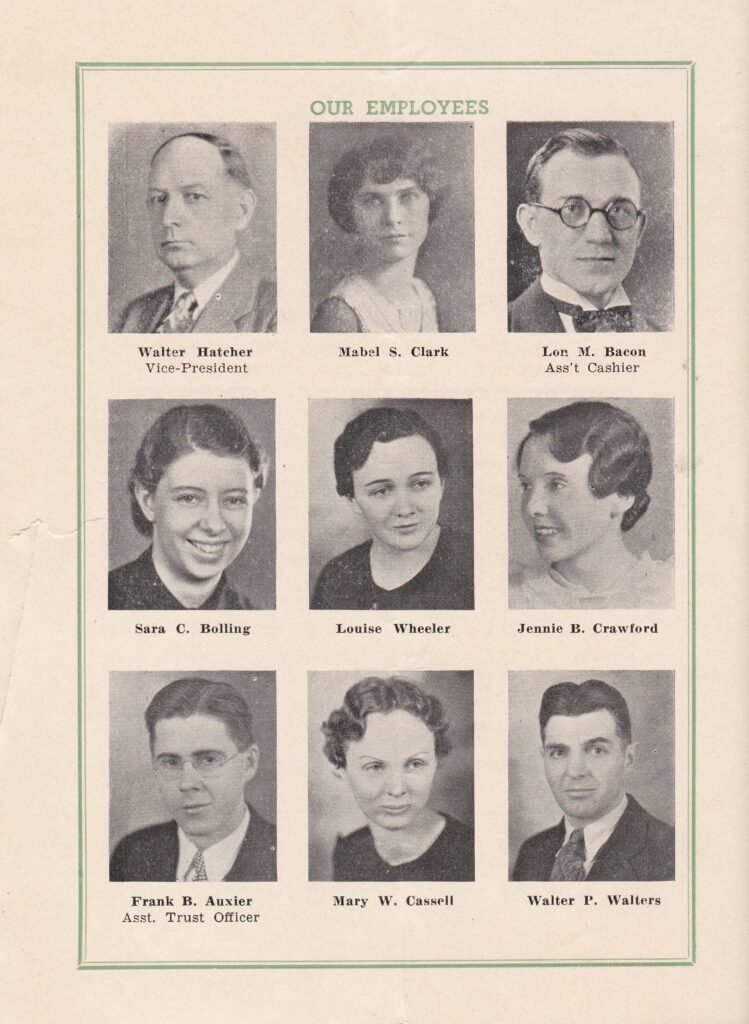
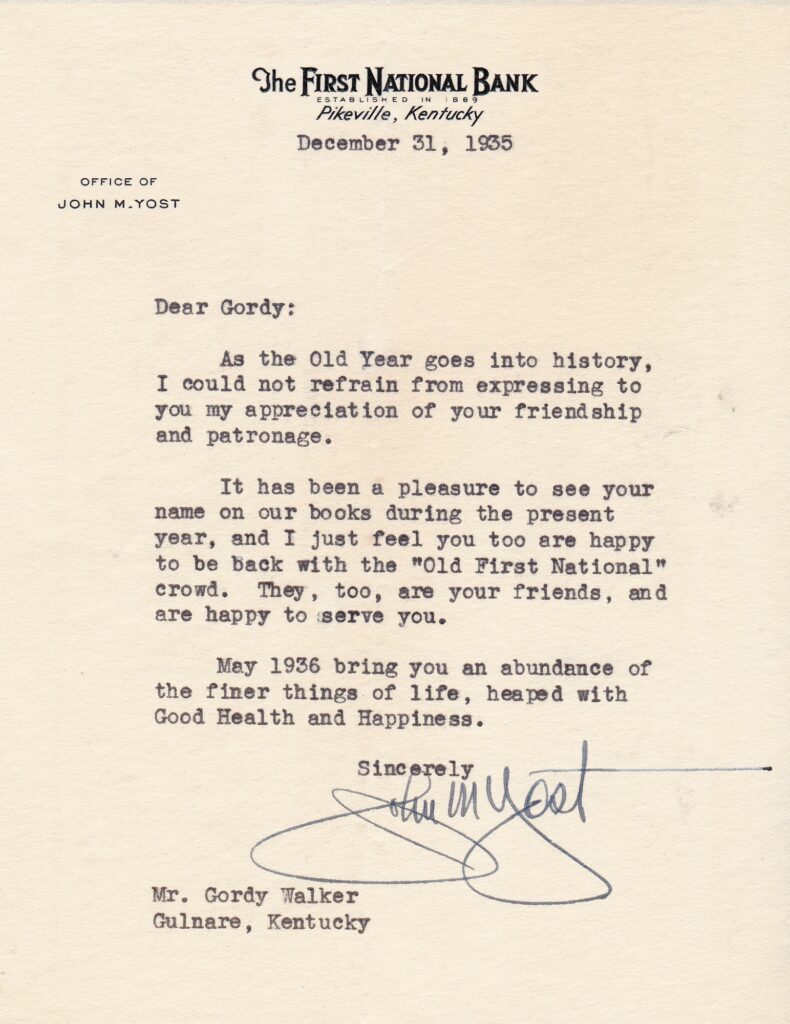
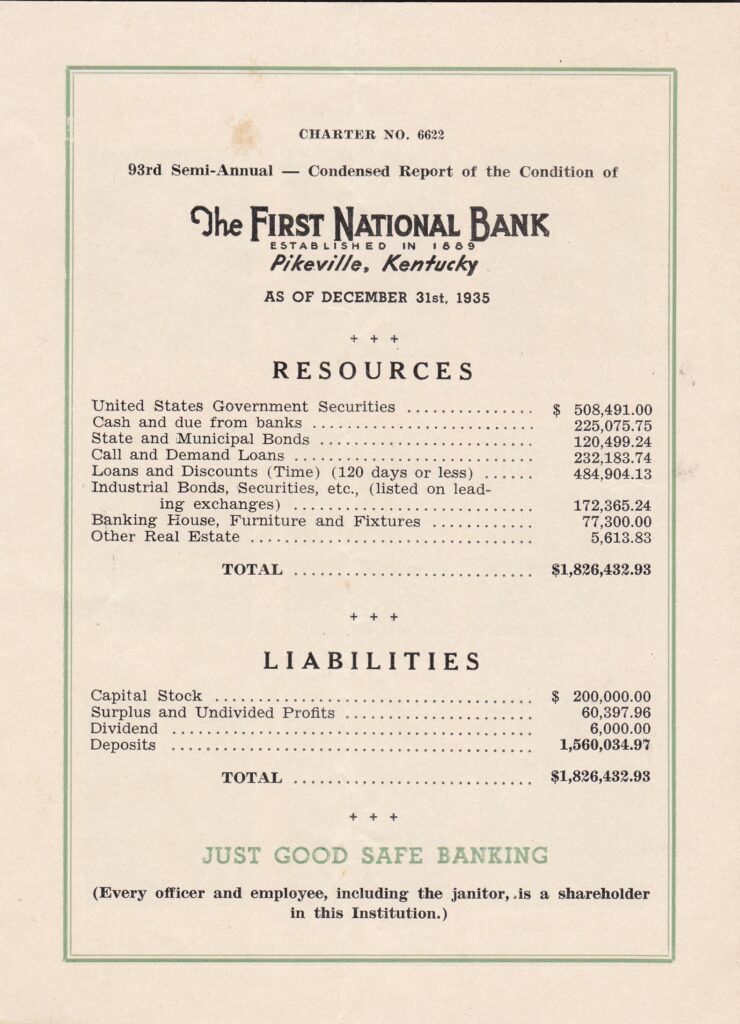
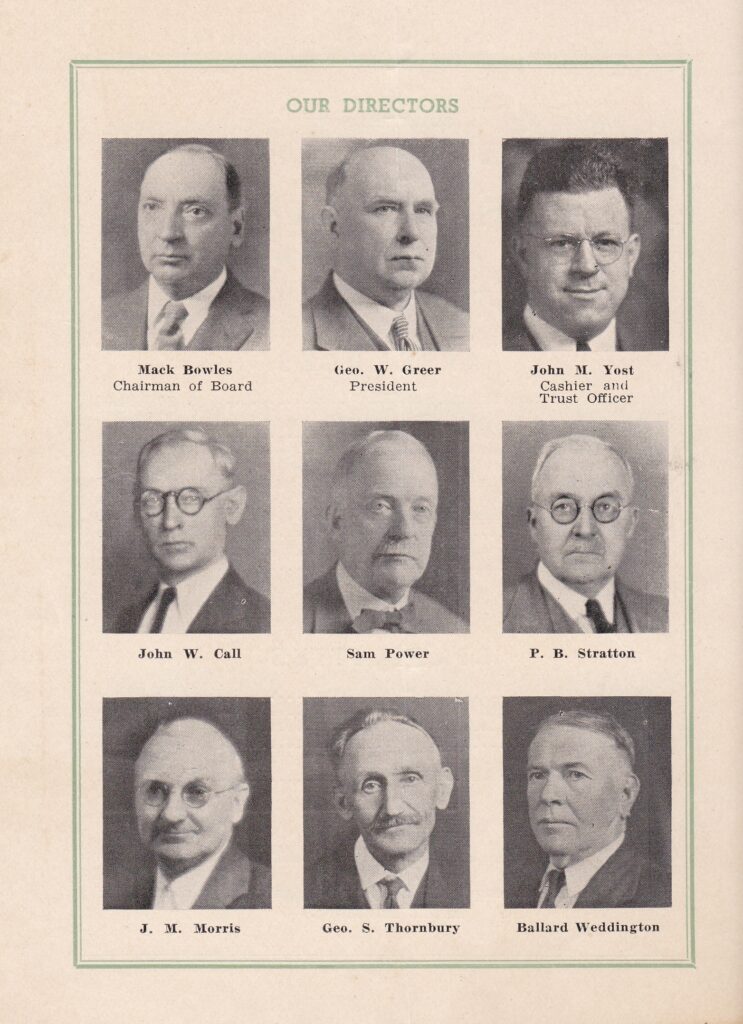
These photos are a Happy New Year Card, with a personal message insert, from the First National Bank dated December 31, 1935.
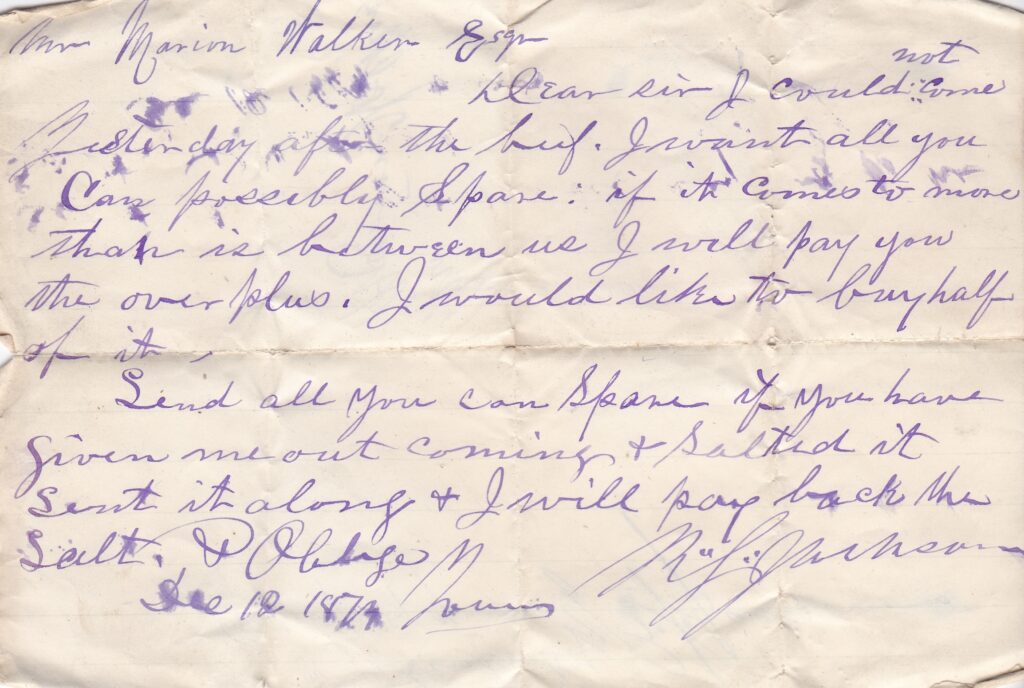
The early 1870s were lean times for Pike County farmers. Droughts came and refused to go away; crops failed; people and livestock went hungry. This letter is from Robert Leslie Jackson, who was attempting to buy beef from Marion Walker, who was evidently one of the more successful Johns Creek farmers. Jackson was a prominent man who had served the Confederacy during the Civil War. During that conflict he had been one of the two major characters in what became known as the Blackburn-Jackson Feud. That feud is covered in depth in a separate story on this site.
